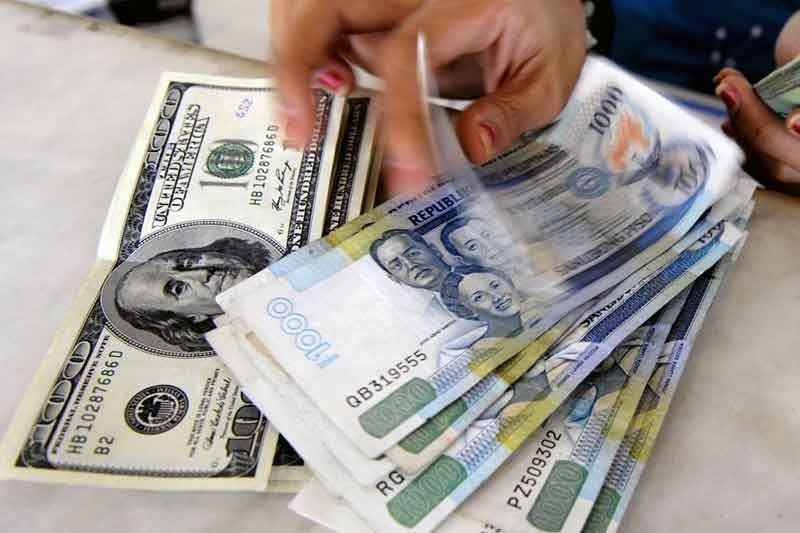Peso rebounds in 2019, 2nd best performer in Asia

MANILA, Philippines — The Philippine peso emerged as the second best performing currency in Asia after the Thai baht this year, sharply recovering from six straight years of depreciation.
The local currency gained 3.7 percent to close 2019 at 50.635 to $1 from last year’s 52.58 to $1.
The peso reversed last year’s performance when it emerged as the third worst peforming currency, shedding 5.3 percent, after the Indian rupee and Indonesian rupiah.
For 2019, the Thai baht was the best performing currency after it appreciated by almost eight percent.
Michael Ricafort, chief economist of Yuchengco-led Rizal Commercial Banking Corp. (RCBC), told The STAR the peso closed 2019 at its strongest level in almost two years due largely to the sharp easing of inflation as well as the steep decline in local interest rates, new record high gross international reserves (GIR) that provides greater cushion/buffer for the peso, improved or bigger balance of payments (BOP) surplus, and narrower trade deficit that reduced the net outflow of US dollars.
Ricafort also cited the sustained growth in remittances from overseas Filipinos, foreign tourism receipts, revenues of Philippine offshore gaming operators (POGOs), and continued foreign investments into the country.
“The peso exchange rate could also be supported by new record highs in the country’s GIR and relatively better BOP data as hinged by improved prospects on exports with relatively narrower trade deficits amid easing US-China trade war and improved global economic or trade prospects, as well as the continued growth in OFW remittances, BPO revenues, foreign tourism receipts, and some pick in foreign investment inflows,” Ricafort said.
Latest data from the Bangko Sentral ng Pilipinas (BSP) showed the GIR level hit a record $86.39 billion in November, equivalent to 7.5 months’ worth of imports of goods and payments of services and primary income as well as 5.6 times the country’s short-term external debt based on original maturity and 4.1 times based on residual maturity.
On the other hand, cash remittances coursed through banks went up by 4.6 percent to $24.86 billion from January to October this year compared to a year-ago $23.77 billion, while personal remittances increased by 4.3 percent to $27.61 billion from $26.47 billion.
For his part, Union Bank of the Philippines chief economist Ruben Carlo Asuncion said in an interview with The STAR the strength of the peso came from many factors led by the weaker-than-expected trade.
“We have exports at the beginning of the year anticipated to have a big recovery but eventually hounded by unfavorable perception due to fiscal reforms and the global trade war stunting the expected recovery,” Asuncion said.
Asuncion also cited the impact of the delayed implementation of the 2019 national budget on import performance that was supposed to fire up capital formation in the economy.
“These have resulted in tepid trade making the peso vulnerable,” Asuncion added.
The UnionBank economist said remittances from overseas Filipino workers significantly influenced the peso with its stable performance this year.
For 2020, economists expect the peso to depreciate anew.
Ricafort said the peso would continue to be relatively stable at 50-51 levels, especially amid the improved global market risk appetite after the phase one US-China trade deal, which could be a step in the right direction to support pick up in global economic growth and global trade, as well as support sentiment in emerging market economies and financial markets, such as those of the Philippines.
Ricafort also cited the increased government spending especially on infrastructure, in view of government’s catch up spending plan, could spill over into 2020
Asuncion said he expects the peso to weaken to a range of 51 to 52.50 to $1 this year as the government resumes its infrastructure spending.
“This will again, like 2018, encourage imports of capital equipment and other related items. This will have pressure on the current account that will have a downward push on the local currency,” Asuncion said.
Asuncion said the peso is likely to end 2020 at 52.19 to $1 or 3.1 percent weaker than this year’s close of 50.635 to $1.
- Latest
- Trending






























